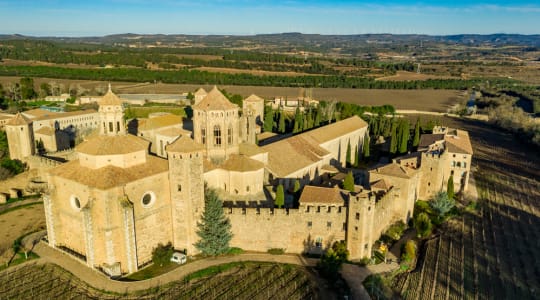
Poblet Abbey, also known as the Royal Abbey of Santa Maria de Poblet, is a Cistercian monastery located in Catalonia, Spain. The abbey was founded in 1151 by Cistercian monks from France, who were invited to the area by Raymond Berenguer IV, Count of Barcelona. It is considered one of the most important and well-preserved medieval monasteries in Europe, and has been designated a UNESCO World Heritage Site.
The abbey's church is a fine example of Catalan Gothic architecture, with a central nave and two side aisles. The interior is notable for its Romanesque and Gothic sculptures and frescoes, including a series of paintings depicting scenes from the life of Christ. The church also contains the tombs of several monarchs of the Crown of Aragon.
The monastery also has a large cloister, with a beautiful garden in the center, which is surrounded by Gothic arches. The cloister is home to a number of interesting features, including a 14th-century well, a 15th-century Gothic fountain, and a series of decorative tiles.
In addition to the church and cloister, the monastery complex includes several other buildings, including a chapter house, a refectory, a dormitory, and a library. The library contains a large collection of manuscripts, including the famous Poblet Bible, a 14th-century illuminated manuscript.
Today, the abbey is still home to a community of Cistercian monks, who maintain the site and continue to carry out their traditional monastic duties. The monastery is open to visitors, who can take guided tours of the church and cloister, as well as explore the monastery's other buildings and gardens.
Explore Near Poblet Abbey
Discover 4 attractions, 5 cities, and 2 airports within 75km. Perfect for planning day trips, finding connecting flights, or discovering new destinations to explore during your visit.
Nearby Attractions & Places to Visit
4 destinations within 32.8km - 67.1km from your location




Nearby Cities Worth Exploring
5 destinations within 25.1km - 72.8km from your location
Airports Near Poblet Abbey
2 destinations within 26.9km - 59.7km from your location
Cross-Border Adventures Near Poblet Abbey
Discover cross-border adventures near Poblet Abbey. Explore neighboring countries with similar attractions and extend your travel experience across borders.




